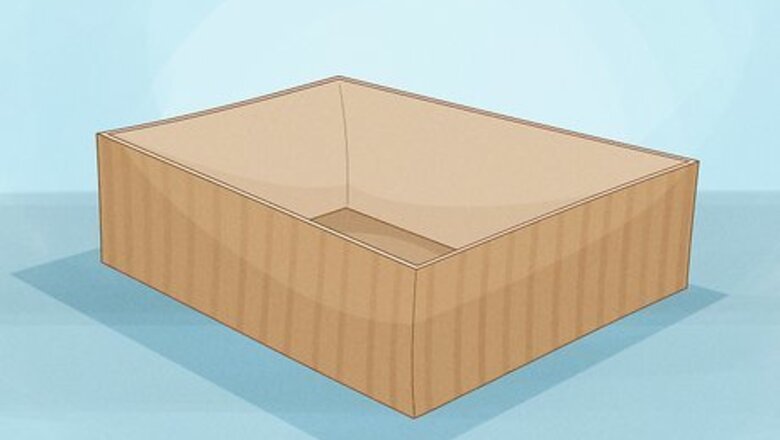
views
Freezing an Ice Block for Ice Blocking
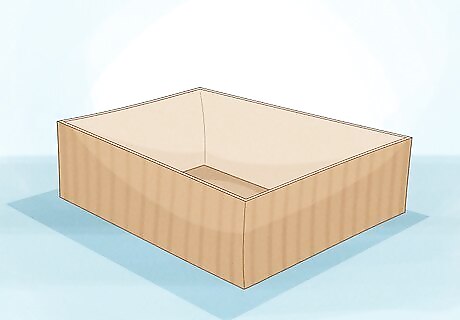
Find a cardboard box to use as a mold for your ice sled. Measure the amount of available space in your freezer. Make sure that the box both fits in your freezer and will be large enough for you to sit on. A good go-to size for an ice block is 10.16 x 43.18 x 43.18 cm (4 x 17 x 17 in). Try to find a box with similar dimensions. At the very least, your block should have a surface area of 30 x 40 cm (11.81 x 15.75 in). Keep in mind that the water will be heavy when it freezes, so you don’t want to pick a box that’s going to be too large and thus too heavy to pick up once it’s frozen. Cardboard boxes are best because they tend to be able to handle the expansion of the water when it freezes into ice. In contrast, plastic boxes might crack.
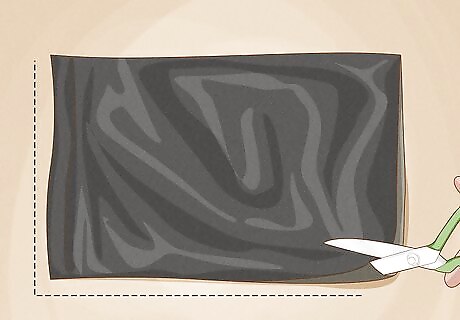
Cut open a trash bag along one side and along the bottom seam. Pull the two sides of the trash bag apart so you have a single layer of plastic. You should now have one big piece of plastic.
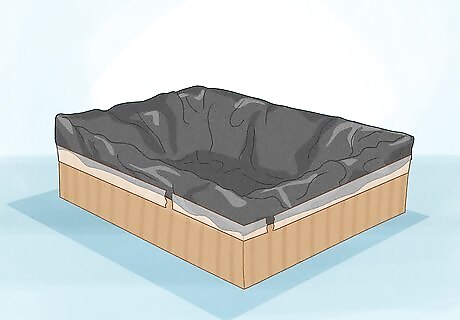
Line the box with your plastic bag and tape it to the outside of the box. Lay the plastic bag over the box with the remaining side seam in the middle of the box, facing down. Secure the bag on the box with duct-tape. One small piece of tape on the bottom of each side of the box should do the trick. Double-check that the plastic bag is large enough to cover the entire interior of the box by pressing it down into the corners of the box. You don’t want any cardboard to be exposed.
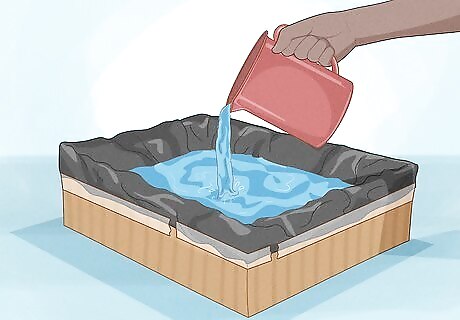
Fill the lined box with 7.62 to 10.16 cm (3 to 4 in) of water. Transfer water from the sink into the box using a pitcher. 7.62 to 10.16 cm (3 to 4 in) of water will make a block of ice that is thick enough to sled on.
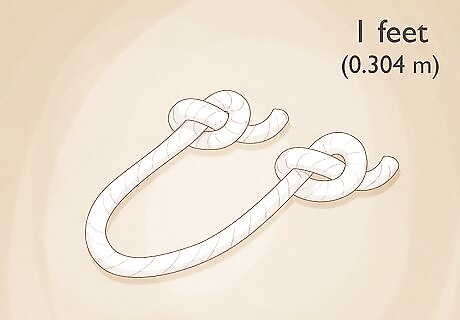
Tie a small knot at each end of the 0.304 m (1.00 ft) rope. This will prevent the rope from coming out of your ice block when you’re pulling it. Again, make sure that your rope is at least 0.304 m (1.00 ft) long. Thicker nylon or polypropylene rope tends to be good to use, but any moderately-thick rope will do.
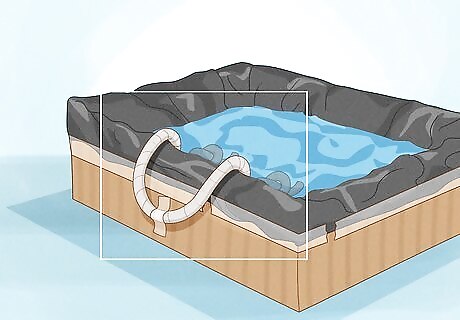
Tape the midpoint of the rope to the side of the box. Find the midpoint of the rope and tape it to the center of what will be the “front” of your ice block — the side that will face forward as you slide down the hill. This rope will will be the handle for your ice block. Then, submerge the 2 ends of the rope in the water and make sure they are floating towards the center of the box.
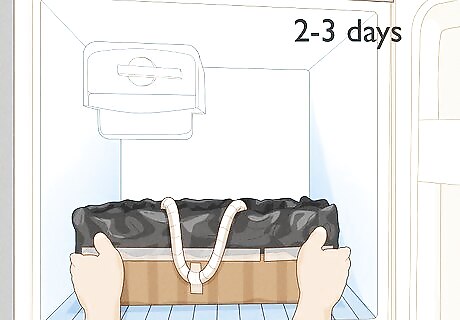
Leave the box in the freezer for 2-3 days. The freezing time will depend on the temperature of your freezer. Start checking your block after 48 hours, and give it more time if it does not look frozen all the way through. Ask for help if your box is heavy and you’re having trouble lifting it into your freezer by yourself. You’ll know that your ice is fully frozen if it looks cloudy in the middle.
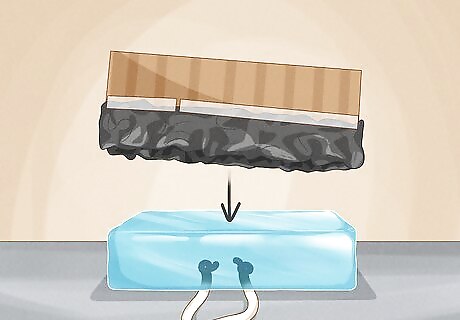
Remove your ice block by turning the box upside down. The block should slide out of the box. You can then remove the tape and pull away the plastic bag from the block, giving you the perfect summer-day sled! Remember: when you sit on your ice block, cover it with a towel so you don’t get your pants wet.
Making Clear Ice Blocks
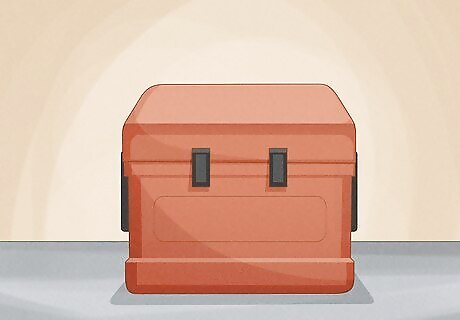
Find a hard-sided, insulated cooler that fits in your freezer. Go with the largest one possible. Smaller, picnic coolers tend to be a good go-to because they are easier to fit in freezers.
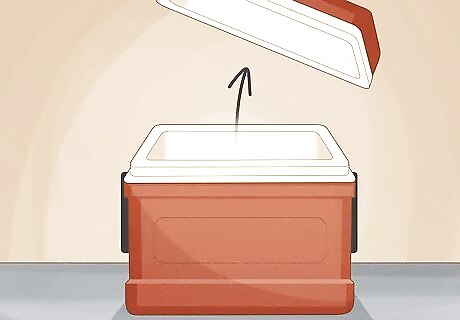
Open or remove the lid. Water usually freezes from the outside-in, and any impurities always freeze last, which is what creates the cloudy part in the middle. However, removing the lid will allow the water to freeze from the top down instead, which makes it easy to separate the clear ice from the cloudy ice.
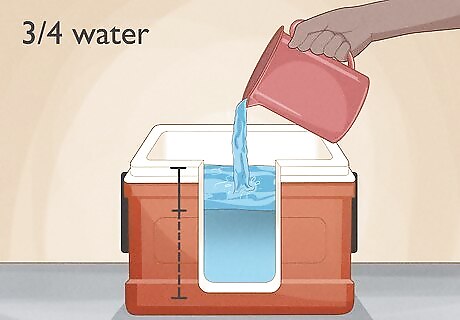
Fill up the cooler 3/4 of the way full with water. Don’t fill it up all the way, because you don’t want the cooler to swell and distort its shape. Some people recommend using filtered or boiling water, but it’s not necessary to achieve a clear ice block.
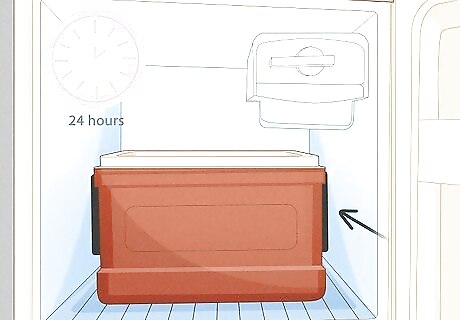
Leave the cooler in the freezer for 24 hours. You don’t want the ice to freeze all the way, because it is harder to cut away the impure, cloudy part if it’s completely frozen. Check on it around the 14-hour mark to see how it’s doing. If at any point it starts to look cloudy at the bottom, take it out!
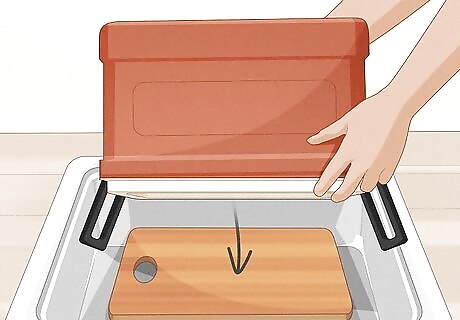
Turn the cooler upside-down over a cutting board in the sink. This will prevent your countertops from getting wet, and will also provide you with an easy surface to cut your ice on. If your cutting board won’t fit in your sink, flip the cooler upside-down in the sink, but be prepared to transfer your ice block to a cutting board elsewhere.
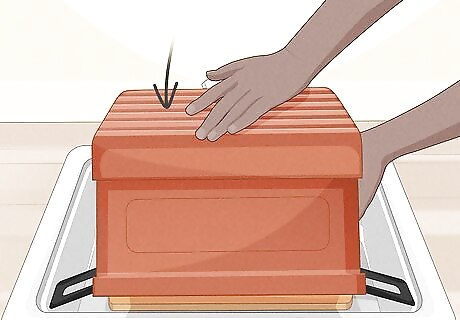
Press on the bottom and sides of the cooler to remove the ice block. Apply a bit of pressure to get the ice block to slide out of the cooler. Keep it gentle — don’t bang or pound on the sides of the cooler. You may need to let the cooler sit upside-down for a bit and let the ice melt just enough for it to slide out. This can take anywhere from 5 to 30 minutes.
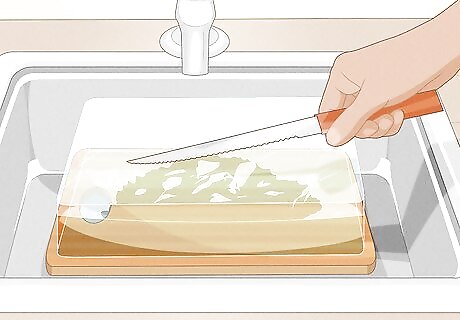
Use a serrated knife to chip away the extraneous shell-like pieces. If your ice didn’t freeze all the way, you’ll be left with some shell-like pieces that formed at the bottom. Gently hit these pieces with the blade of your knife to loosen them and break them away.
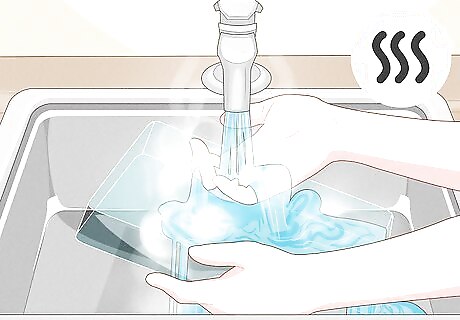
Run the ice block under warm water to smooth it out. Your ice block may have some rough, unsightly edges, so running it under a bit of warm water can make the surface look smooth. Make sure the water isn’t so hot that it melts large portions of the ice, though.
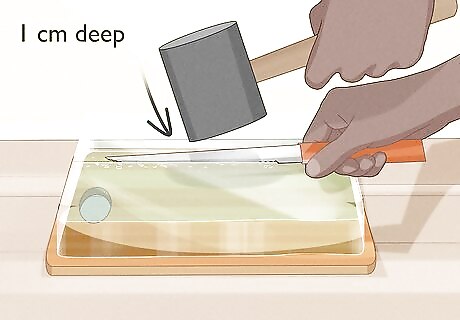
Use your knife and mallet to cut the ice block into smaller pieces. If you want to make large ice cubes, make small incisions in the ice — about 1 cm (0.39 in) deep — with your knife and then gently hit the middle of the back of your knife blade while it’s still inserted in the ice with a mallet. This will split off nice, even slices of your ice that you can easily divide up into large cubes (using the same technique) to add to your favorite drinks. Sometimes, the ice won’t break off evenly when you hit it with the mallet. This could be because you did not cut deep enough with the knife, or your incision wasn’t straight to begin with.




















Comments
0 comment